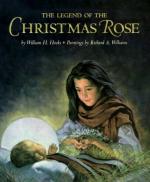|
This section contains 285 words (approx. 1 page at 400 words per page) |

|
The Legend of the Christmas Rose Summary & Study Guide Description
The Legend of the Christmas Rose Summary & Study Guide includes comprehensive information and analysis to help you understand the book. This study guide contains the following sections:
This detailed literature summary also contains Bibliography on The Legend of the Christmas Rose by Selma Lagerlöf.
"The Legend of the Christmas Rose," by Selma Lagerlöf, was first published in 1908 in Swedish in a collection of stories, En saga om en saga och andra sagor, which was published in English as The Girl from the Marsh Croft (1910). The story is representative of most of Lagerlöf's tales, since it combines real-life details with legends and folklore. The story draws on the legend of the Christmas Rose, an actual flower—Helleborus niger—that blooms in winter conditions. The dominant legend of this flower's origin concerns the birth of Christ. However, as she does in other stories, Lagerlöf incorporates parts of this legend, but changes it to fit her own purpose and setting. Most of Lagerlöf's stories concerned Swedish legends and folklore. Because of this, "The Legend of the Christmas Rose" is unique. It takes place in Skåne, a modern-day Swedish province that was actually Danish during the twelfth century when the story takes place. The presence of Archbishop Absalon—the actual Catholic archbishop of Lund from 1177 to 1201—helps to pinpoint the story's time period. Through the seemingly simple tale of a miracle that is revealed every Christmas Eve to outlaws who live in exile in the forest, Lagerlöf explores some of the basic tenets of Christianity—including not judging people, the belief that anybody can be redeemed, and the rejection of materialism. More importantly, the story shows that any human, even a high-ranking member of the church, is susceptible to breaking these tenets. A current copy of the story can be found in Girl from the Marsh Croft, which was published in 1996 by Penfield Press.
Read more from the Study Guide
|
This section contains 285 words (approx. 1 page at 400 words per page) |

|



